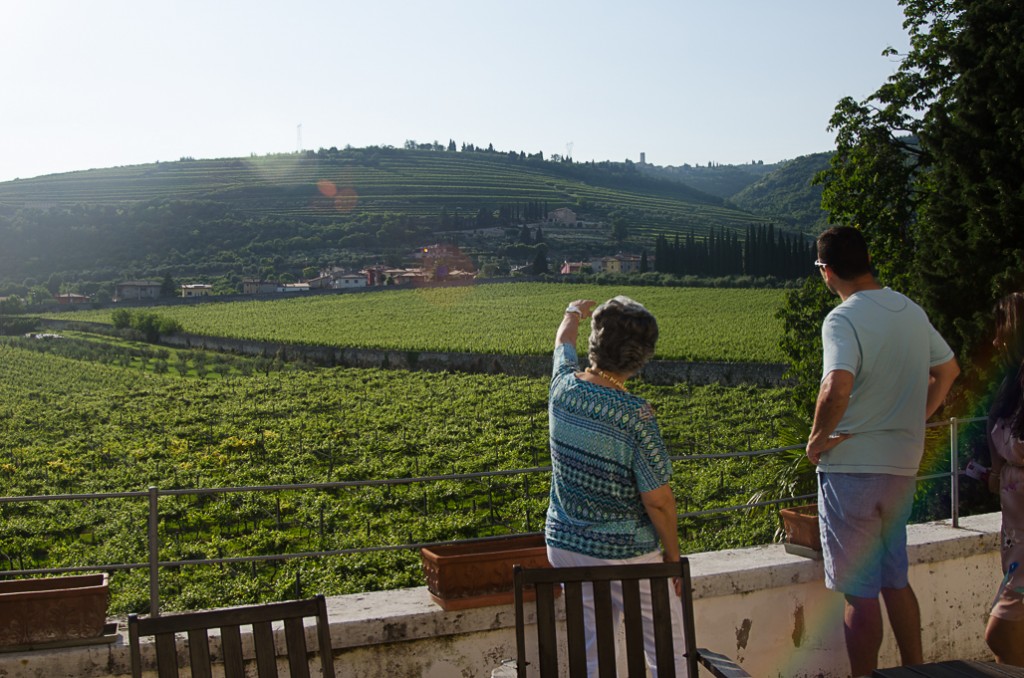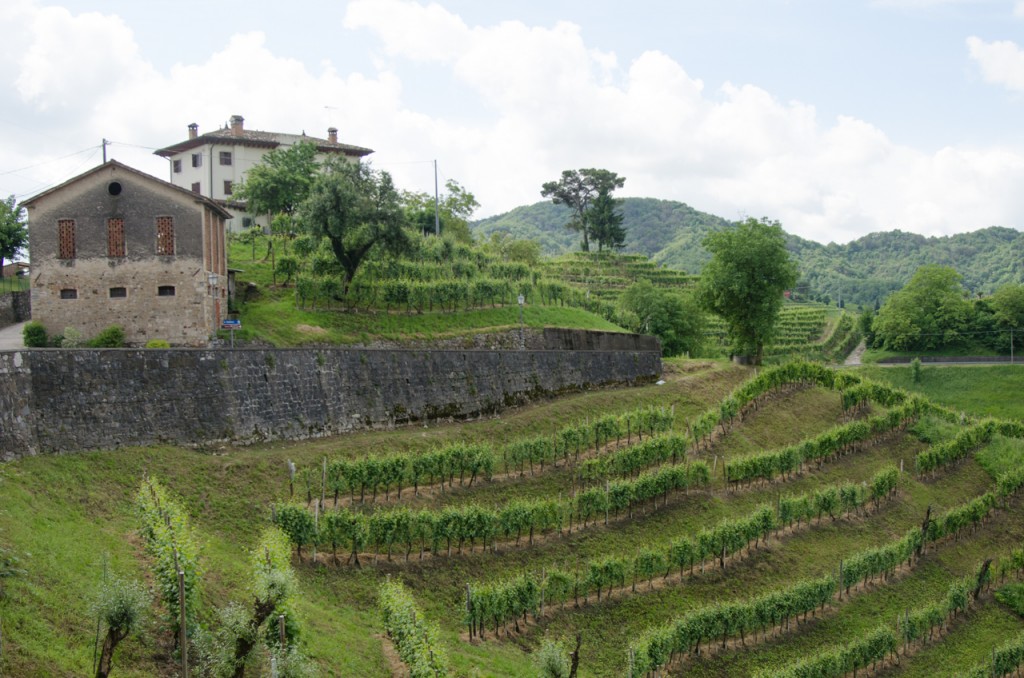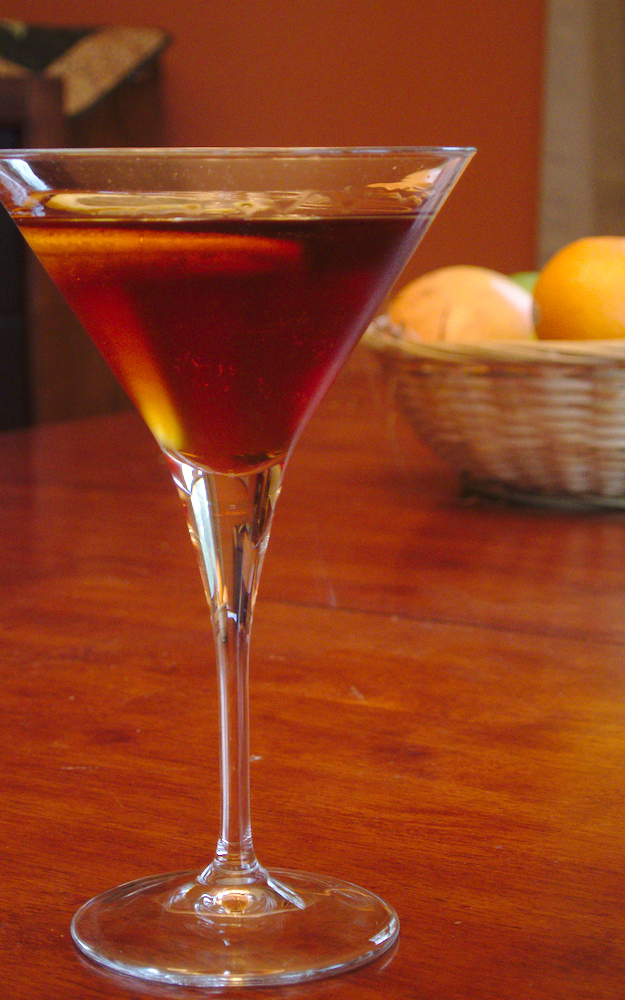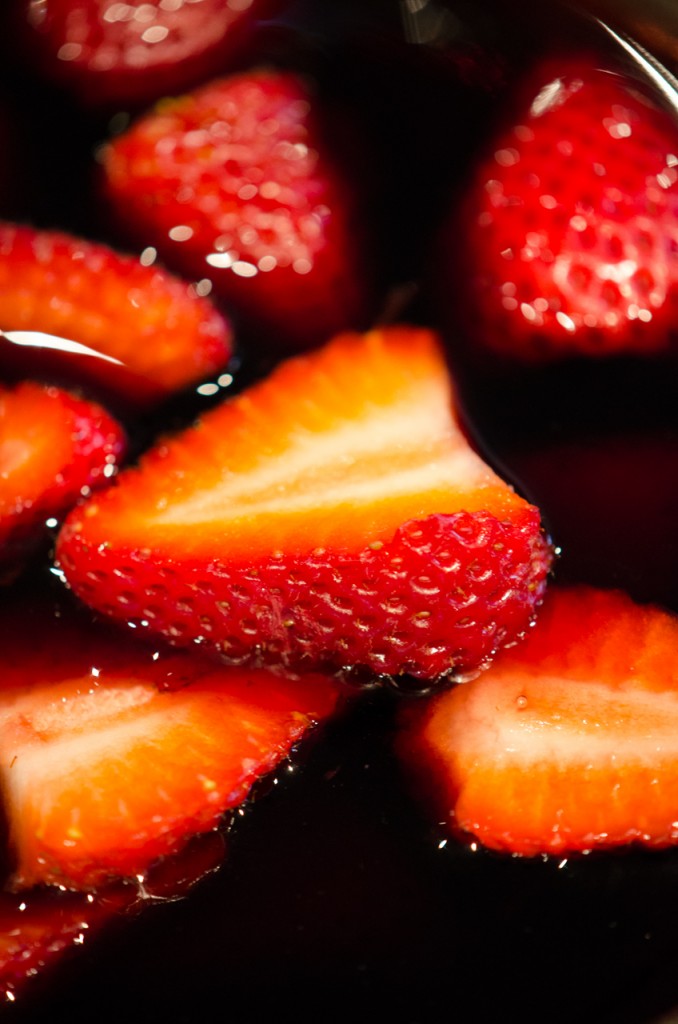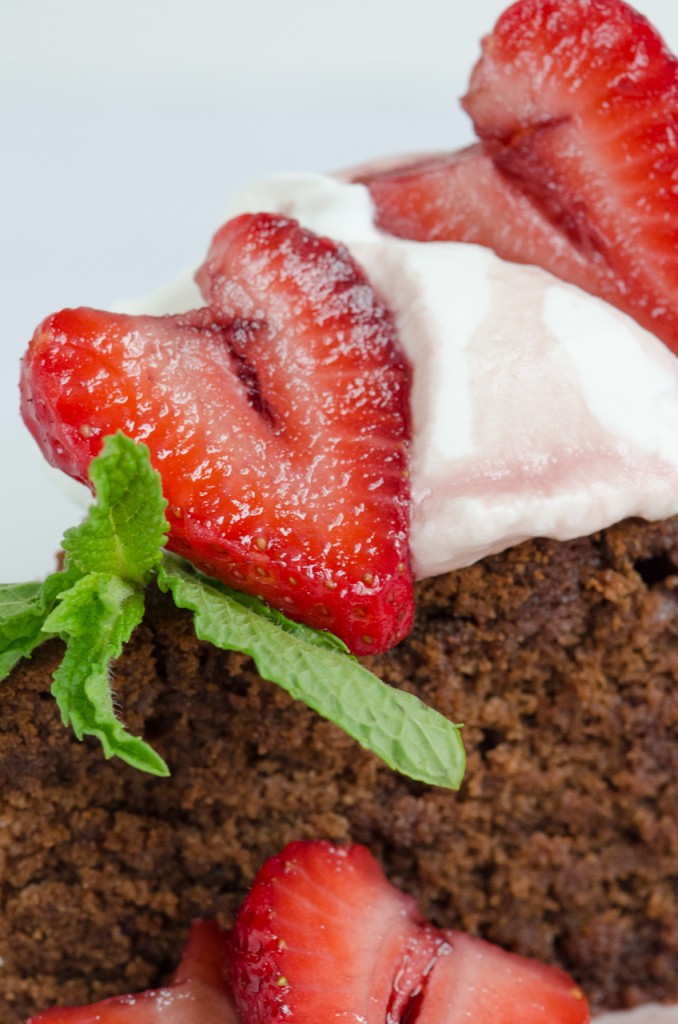Our last Italiaoutdoors Food and Wine custom bike trip to Italy included a visit to an Amarone producer. Our clients were big fans of Amarone, and I wanted to take them someplace special. I didn’t want a large, well-known producer where you pay many euros to sample a few wines and are taken on a standard tour by a staff member. Instead, what I was looking for – and found – was a small producer where my guests could see first hand the knowledge, the labor, and the passion involved in making wines.
A Very Special Day on Our Prosecco Wine Tour – Col del Lupo
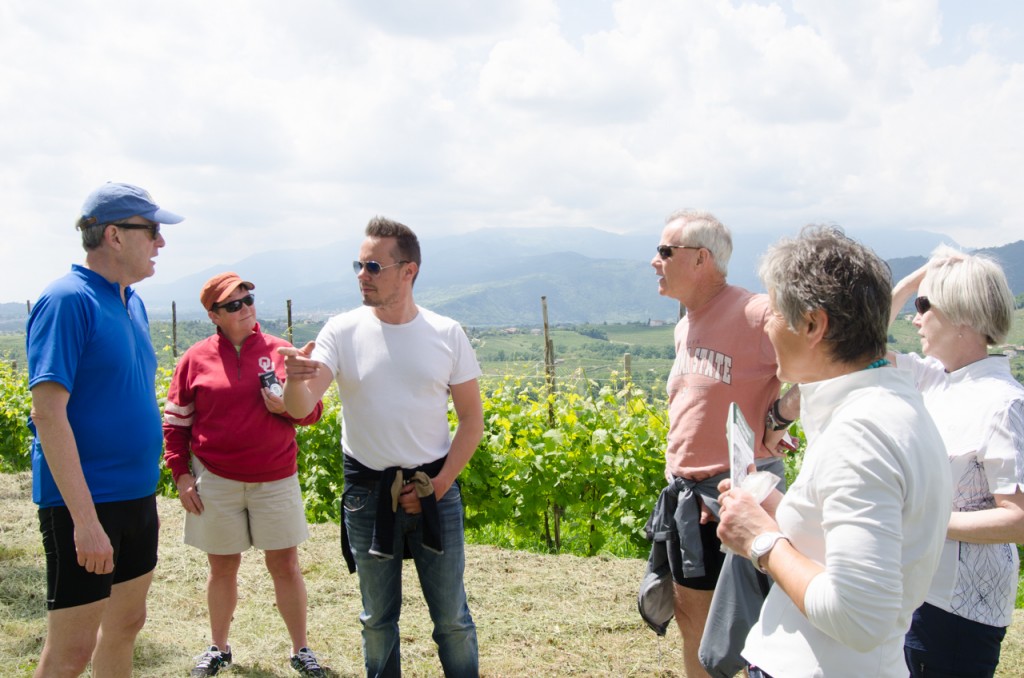 A highlight of our Bike the Prosecco Wine Roads tour is a visit to a Prosecco producer. Just getting there is a pleasure. To quote a guest, “This is the most beautiful bike ride I’ve ever done.” We tackle a few hills, very ‘pedalable’ as the Italians describe them, and our efforts are well rewarded, with spectacular vistas around each bend in the road.
A highlight of our Bike the Prosecco Wine Roads tour is a visit to a Prosecco producer. Just getting there is a pleasure. To quote a guest, “This is the most beautiful bike ride I’ve ever done.” We tackle a few hills, very ‘pedalable’ as the Italians describe them, and our efforts are well rewarded, with spectacular vistas around each bend in the road.
The Negroni – Reinvented
While I’ve been busy leading our Bike the Prosecco Wine Roads tour, I’ve enlisted the help of my first guest blogger, my husband and Negroni fan, Gordy Bechtel.
Is it possible to make the Negroni better? After reading my wife’s recent post on the Negroni, I’m guessing you might think that I’ve already placed the Negroni on a pedestal to be worshiped and left alone.
Well, to be honest, you’d be correct.
However, fortunately for me, I was rescued the other evening from my Negroni habit. I don’t mean that Kathy confronted me with a room full of my friends and family who all emotionally effervesced about my “problem.” No, that wouldn’t work. You see my friends and family would just mix everyone their favorite cocktail – Negroni’s, Manhattans, and Martinis are well liked in this crowd – and we’d begin talking. The next thing you know we’d be enjoying Kathy’s cooking and debating whether or not Jon Stewart really is the best source for news.
Torta al Vino Rosso con Fregola – Red Wine Chocolate Cake with Strawberries
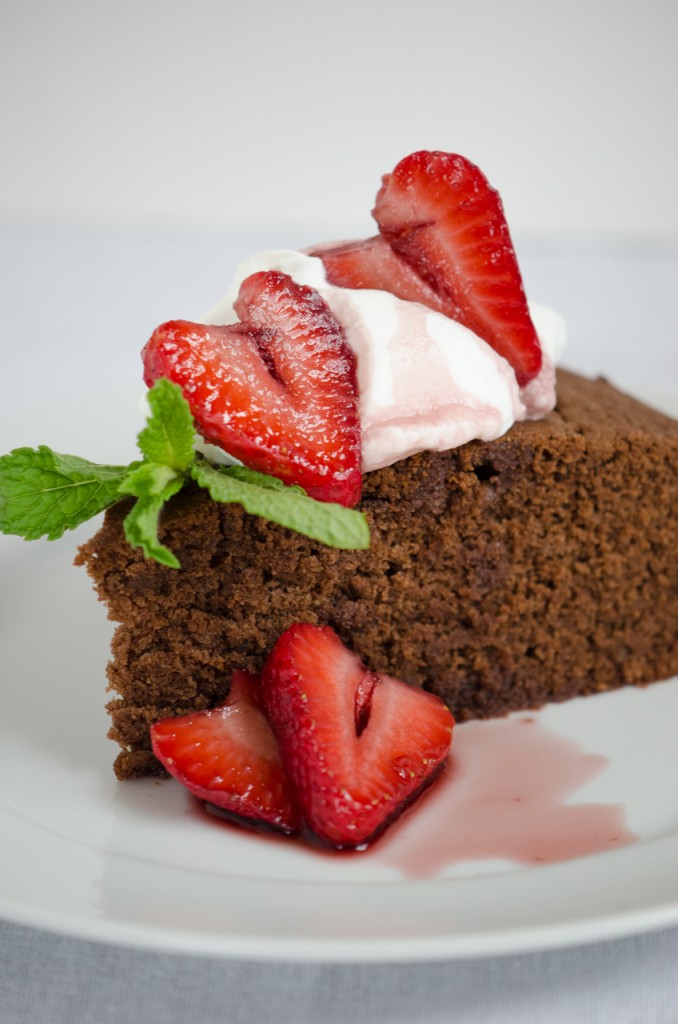 This recipe was recently featured in an article in La Cucina Italiana magazine, entitled Italy’s Best Desserts. The author is Francine Segan, a food historian and the author of a new book, Dolci: Italy’s Sweets. I loved the article, Francine offered some very traditional sweets that included some wonderfully unique flavor combinations. Her background as a food historian shines through as she shares the story behind the recipes, something I try and share with our guests during our cooking classes on our culinary bike tours.
This recipe was recently featured in an article in La Cucina Italiana magazine, entitled Italy’s Best Desserts. The author is Francine Segan, a food historian and the author of a new book, Dolci: Italy’s Sweets. I loved the article, Francine offered some very traditional sweets that included some wonderfully unique flavor combinations. Her background as a food historian shines through as she shares the story behind the recipes, something I try and share with our guests during our cooking classes on our culinary bike tours.
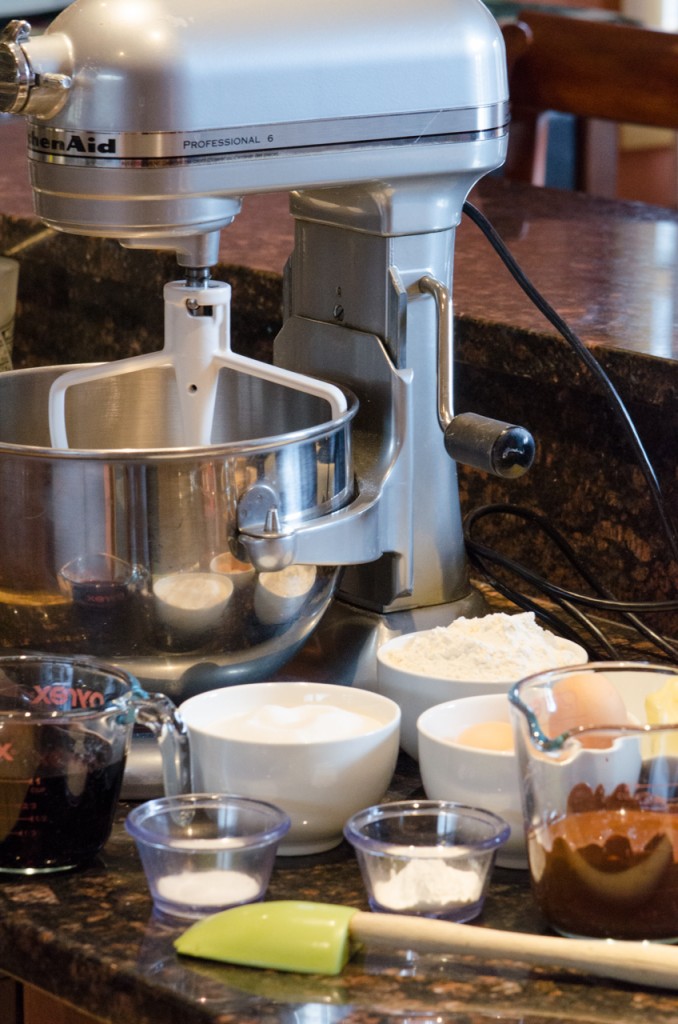
Francine was taught this recipe from Paola, a woman from Bologna who shares her regions (Emilia Romagna) cuisine with foreign visitors through Home Food Italy (homefood.it). She explained that this cake is usually served with a glass of dry red wine. As this cake is not overly sweet, Italians will serve it after a meat-based secondi with a red wine sauce, so guests can continue to enjoy the same red wine from dinner through dessert, which is usually frowned upon in Italy. The fruit of the wine provides a wonderful foil for the dense, dark chocolate.
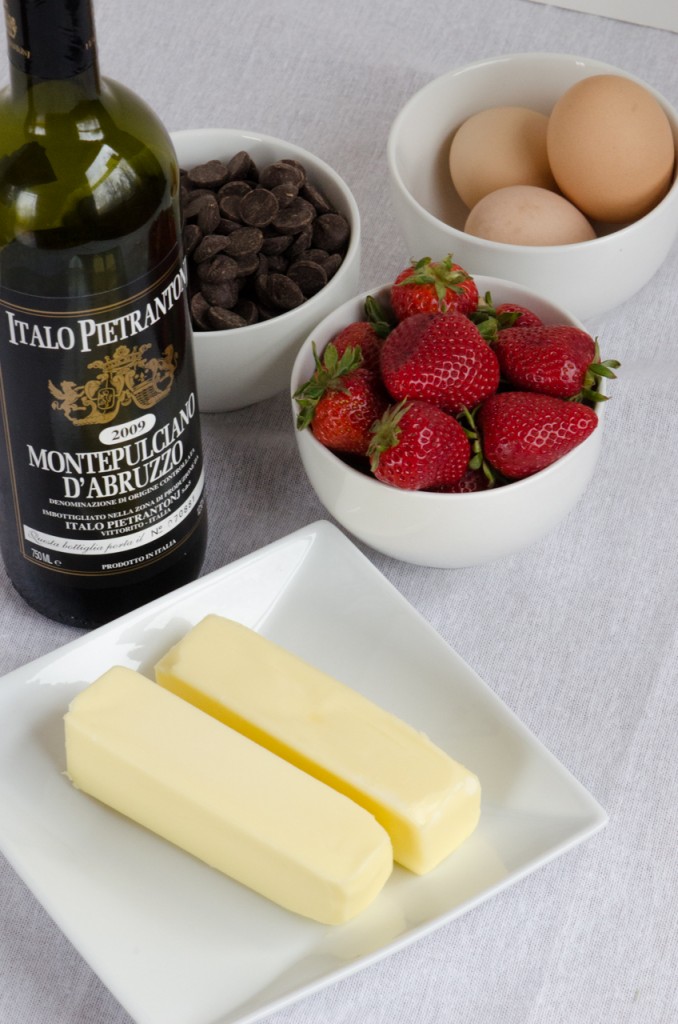
Francine includes raspberries in her recipe, but I decided to use strawberries instead, as the season is just around the corner. Browsing through Lynne Rosetto Kasper’s A Splendid Table, I found the perfect strawberry recipe – Fragole al Vino Rosso. I thought this the perfect accompaniment to the torta, with one simple change; I replace lemon juice with balsamic vinegar, one of Emilia Romagna’s signature products, and a perfect pairing with fresh strawberries.
Torta al Vino Rosso
1 cup (2 sticks) unsalted butter, at room temperature, plus more for greasing pan
1 1/2 cups unbleached all-purpose flour
1 tablespoon baking powder
3/4 teaspoon fine sea salt
1 1/4 cups sugar
3 large eggs, separated
5 ounces good-quality bittersweet chocolate (80% or more), melted
1 cup dry red wine
Preheat oven to 350°.
Grease a 9 or 10-inch springform pan and line the bottom with parchment paper. Butter the parchment.
In a large bowl, whisk together four, baking powder, and salt, set aside. In the bowl of an electric mixer fitted with the paddle attachment, beat together butter and 1/2 cup sugar on medium speed until light and fluffy, about 4 minutes. Beat in egg yolks, 1 at a time, scraping bowl as necessary. Add chocolate; beat just to combine. In 3 additions, add wine to butter mixture, alternating with flour mixture.
In a large bowl, using a clean whisk beater, beat egg whites until soft peaks form. Gradually add remaining 3/4 cup sugar and beat until the whites are firm and glossy.
Using a spatula, gently fold whites into batter just until no white streaks remain. Pour batter into prepared pan, smooth top with spatula. Bake until a toothpick inserted in the center comes out clean, 40 to 45 minutes.
Transfer cake to wire rack; let cool in pan 10 minutes. Run a knife around pan to loosen cake, release from pan. Let cool completely on wire rack.
1 cup fruity red wine (Valpolicella, Merlot)
1 tablespoon balsamic vinegar
2 tablespoons sugar
1 pint ripe strawberries, rinsed, hulled, and sliced
Combine the wine, balsamic vinegar, and sugar in a deep bowl. Add the strawberries. Let stand 1 hour at room temperature. Then refrigerate 30 minutes to 1 hour before serving. Keep them much longer than 2 hours softens the fruit too much.
Grilled Pecorino with Fava Bean Salad
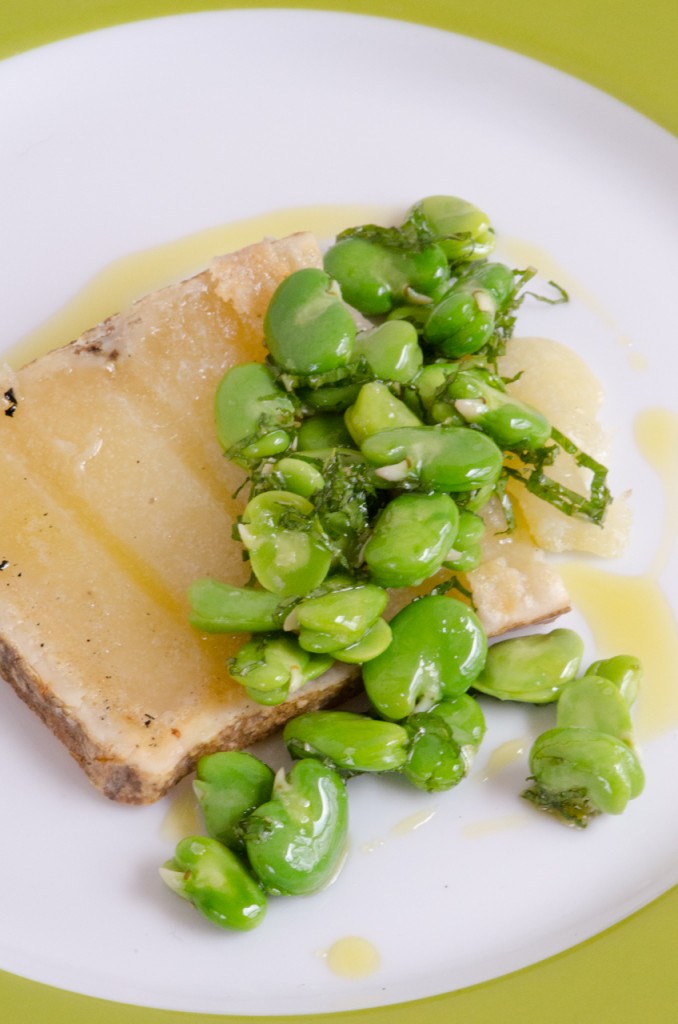 Fava beans, or broad beans (fava is Italian for ‘broad bean’) have been cultivated in the Old World for thousands of years. Along with lentils, peas and chickpeas, these easy to grow beans have been part of the Mediterranean diet since about 6000 BC. From Elizabeth Schneider’s Vegetables from Amaranth to Zucchini: “This venerable mainstay of the Old World has been cultivated for so long that its wild ancestor and place of origin are no longer traceable. Found from China to England, where they are known as broad beans, they are now most associated with the south of France and Italy.” This association with Mediterranean cuisine has made the fava bean highly sought after by chefs; the labor involved with preparing them unfortunately makes them a bit intimidating for home cooks.
Fava beans, or broad beans (fava is Italian for ‘broad bean’) have been cultivated in the Old World for thousands of years. Along with lentils, peas and chickpeas, these easy to grow beans have been part of the Mediterranean diet since about 6000 BC. From Elizabeth Schneider’s Vegetables from Amaranth to Zucchini: “This venerable mainstay of the Old World has been cultivated for so long that its wild ancestor and place of origin are no longer traceable. Found from China to England, where they are known as broad beans, they are now most associated with the south of France and Italy.” This association with Mediterranean cuisine has made the fava bean highly sought after by chefs; the labor involved with preparing them unfortunately makes them a bit intimidating for home cooks.
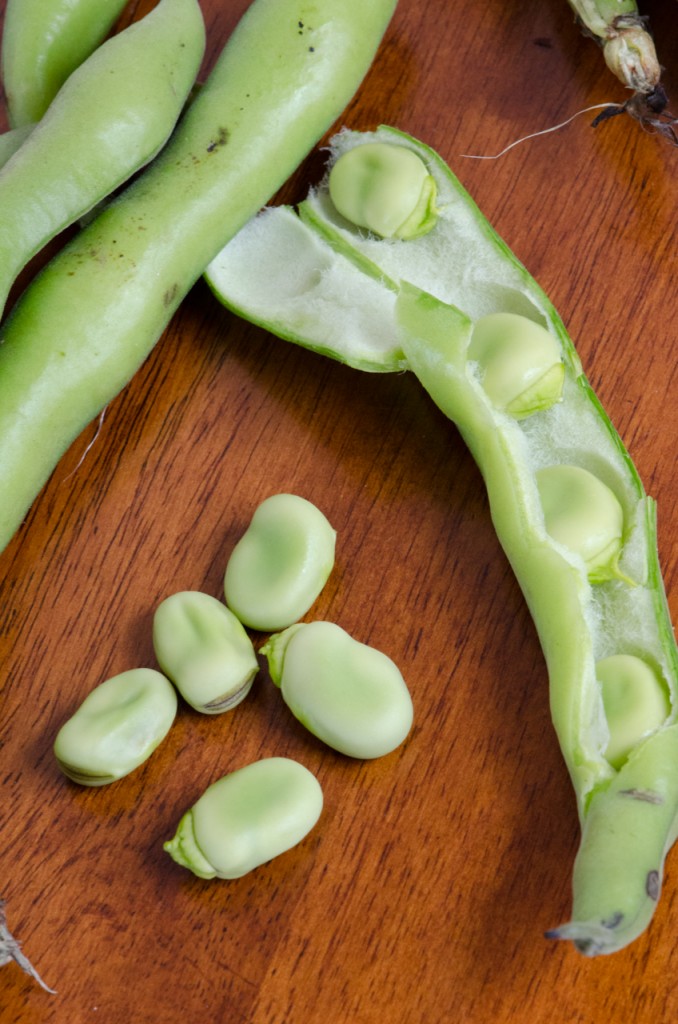
But, once you go through the laborious preparation, very little needs to be done. Simplicity is key here – Elizabeth quotes my good friend, cycling companion and chef, Jody Adams: “I feel they are one of those foods that should be treated with almost ritualistic simplicity.”
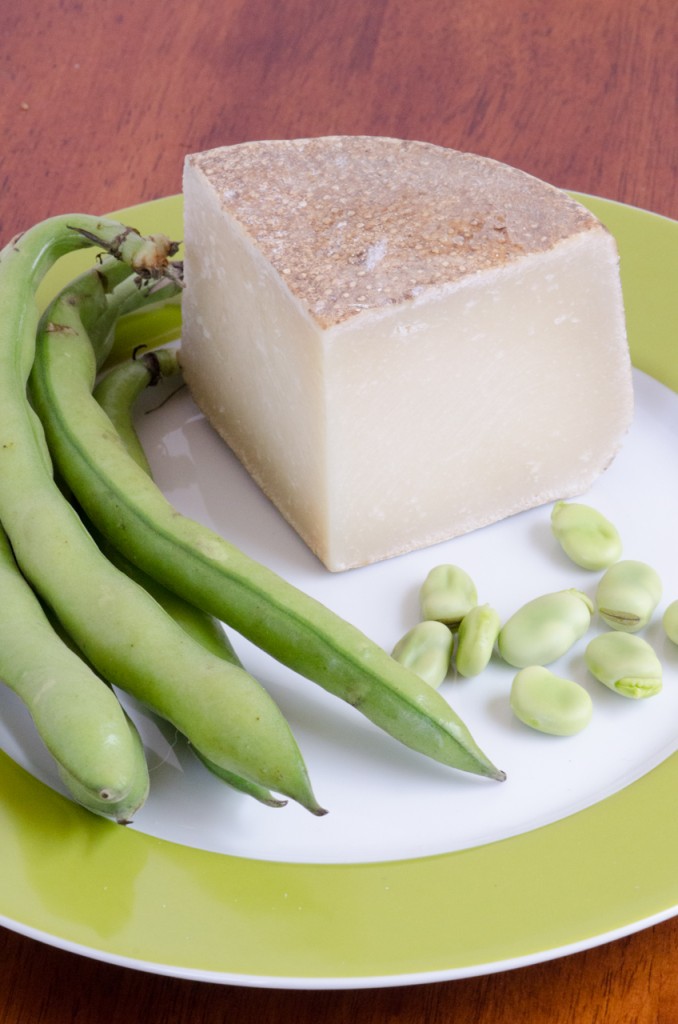
Salty hard cheeses and fava beans are a classic combination. In Tuscany, one of the regions we visit on our Bike the Wine Road cycling tours, the salty hard cheese of choice would be one of the many Pecorino cheeses produced here. The name “Pecorino” is a somewhat recent invention. Pecorino comes from the word pecora, meaning sheep, as these cheeses are made from ewe’s milk. But prior to the end of World War II, every area in Tuscany had it’s own “cacio” that it made from ewe’s milk, using very similar production techniques. Today, you will find many types of pecorino cheeses in Tuscany (as well as Sardinia, Lazio and Sicily). Pecorino Toscano has earned the EU DOP quality designation. So the salad itself is quite simple; this is an adaptation of a dish from Elizabeth Schnieder’s book. The labor – multiple steps, but each quite easy – is in the preparation of the beans themselves.
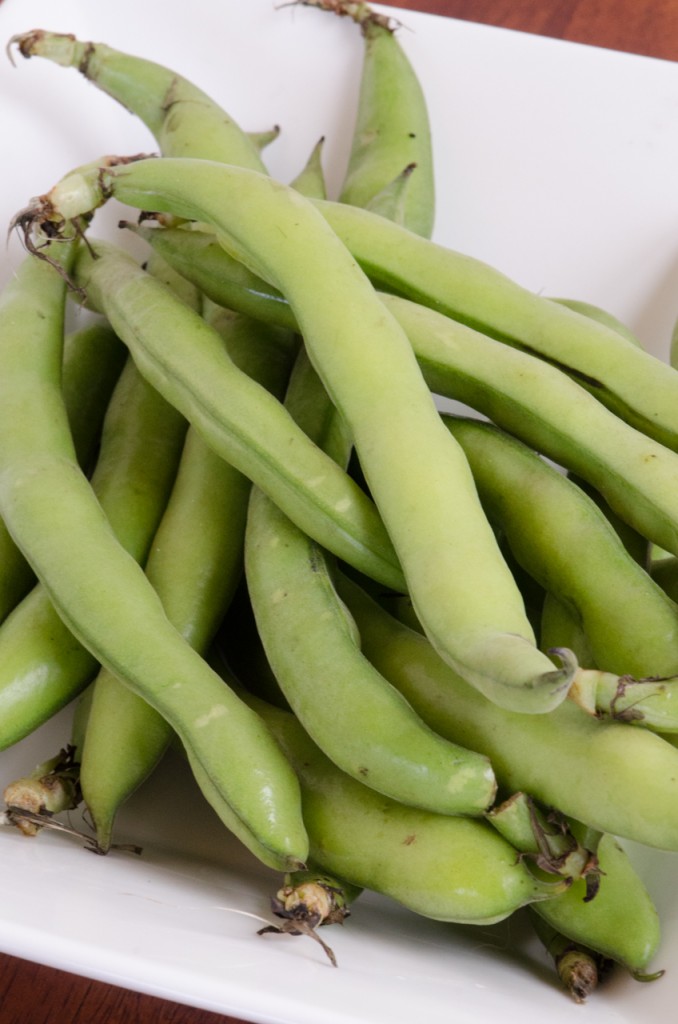
Unless you have access to favas straight off the vine, and using them in stews or purees, you will need to both shell and skin them. Most beans sold in the US will require both. First, spend some time picking out the right beans. You should inspect each pod, feeling for large, individual beans. In my enthusiasm to actually see them in stores – they still rarely grace the produce section in my neck of the woods – I have grabbed handfuls, to get home and open them up and find beans so immature as to yield nothing after peeling. You want to inspect each, feeling for beans inside each pod that are as large as a fingernail.
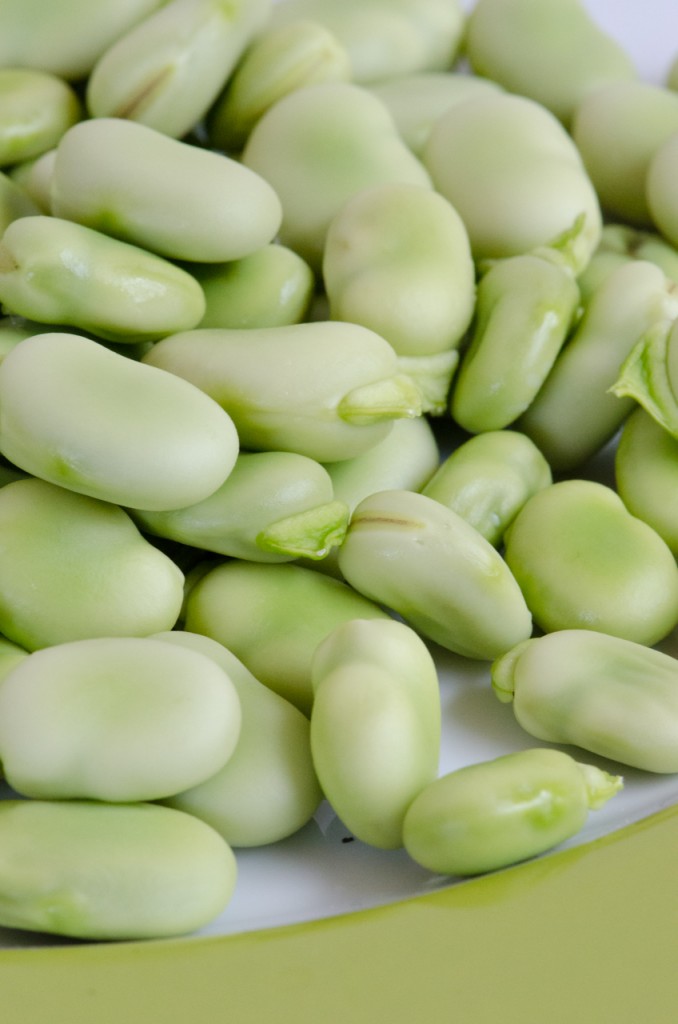 Next, you will need to shell, blanch, and then peel your fava beans. To do this: Snap the tips off the pods, then strip any strings along the pod. Open the seam, and pull out the individual beans from the plush pod in which they lie.
Next, you will need to shell, blanch, and then peel your fava beans. To do this: Snap the tips off the pods, then strip any strings along the pod. Open the seam, and pull out the individual beans from the plush pod in which they lie.
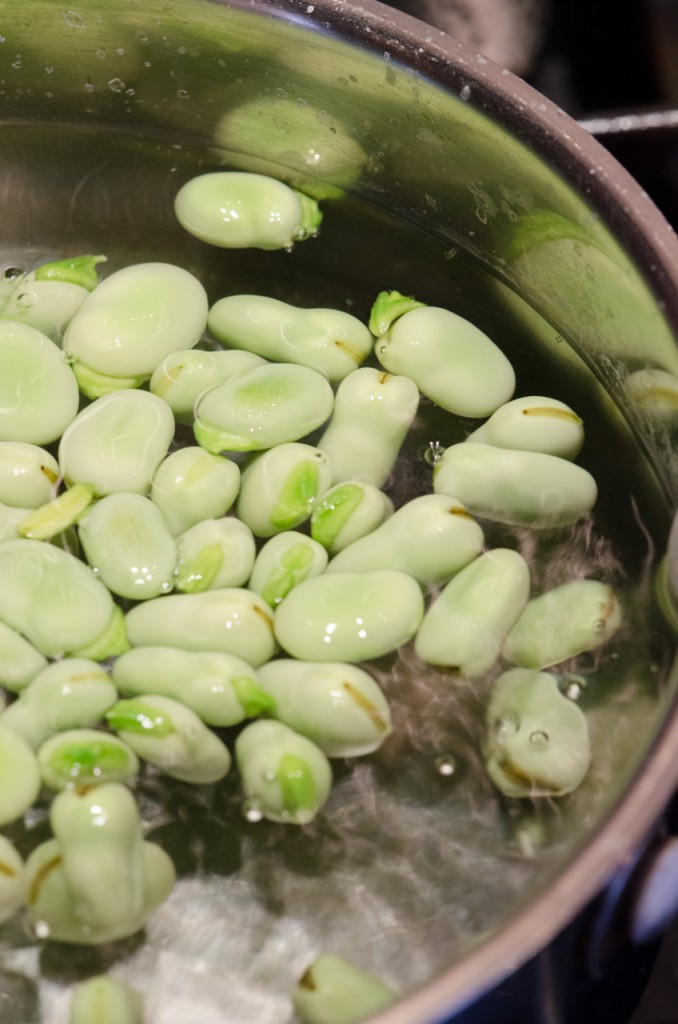 Bring a pot of water to a rolling boil, and salt. Dump the beans into the boiling water, and return to a boil. Do NOT cover. Cook for 30 seconds to 1 minute, depending on size. No more, or they will squish when you skin them. Drain and drop into ice water to stop the cooking process.
Bring a pot of water to a rolling boil, and salt. Dump the beans into the boiling water, and return to a boil. Do NOT cover. Cook for 30 seconds to 1 minute, depending on size. No more, or they will squish when you skin them. Drain and drop into ice water to stop the cooking process.
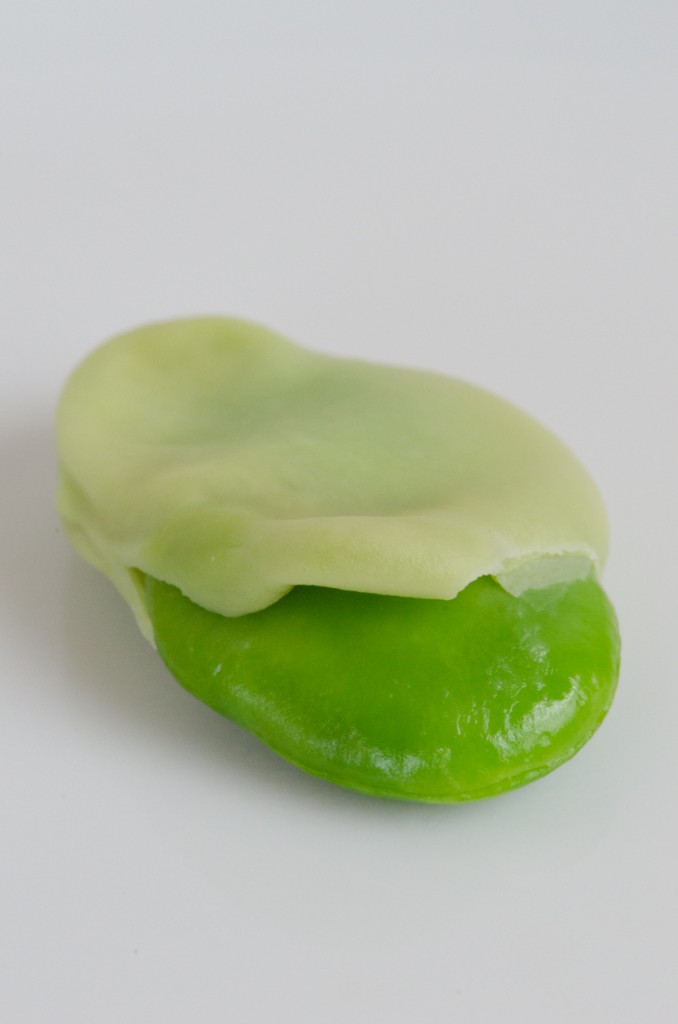 To peel, pinch a bit of skin off of the top of each bean with your fingernail. You will then be able to squeeze the bean at the opposite end and pop out the bean. Truly a labor of love.
To peel, pinch a bit of skin off of the top of each bean with your fingernail. You will then be able to squeeze the bean at the opposite end and pop out the bean. Truly a labor of love.
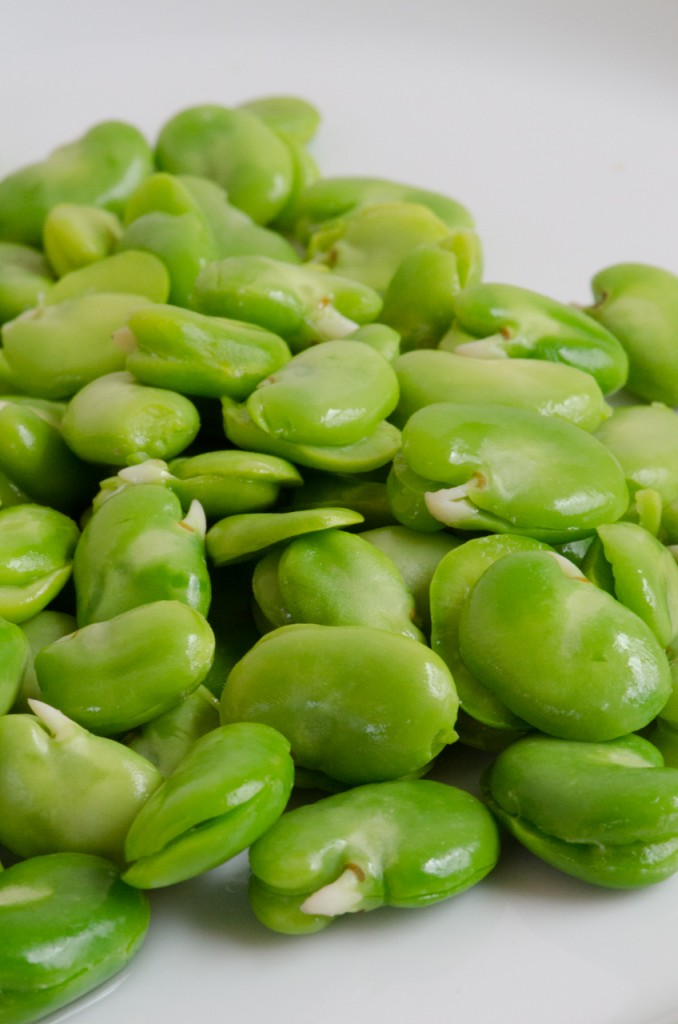 Grilled Pecorino with Fava Bean Salad
Grilled Pecorino with Fava Bean Salad
Serves 4
8 ounces aged Pecorino, sliced into 1/2 inch slices
20 – 25 pods fava beans
2 tablespoons extra virgin olive oil, plus more for drizzling
1 clove garlic, finely chopped
5 leaves fresh mint, chiffonade
Kosher salt
Blanch favas and peel when still warm. Toss with olive oil, garlic, and fresh mint. Season with salt.
Grill the pecorino cheese until just colored on each side and soft. Place warm cheese on plate and spoon over the fava beans. Drizzle with olive oil and serve.
